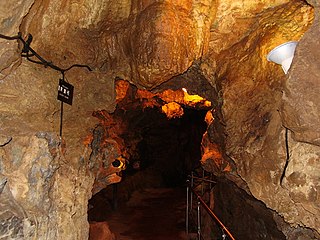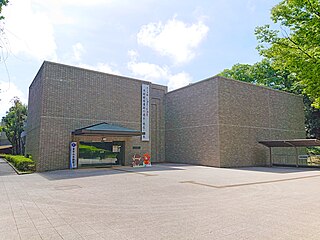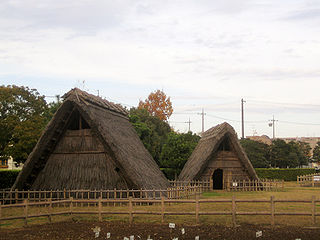21 Sights in Hamamatsu, Japan (with Map and Images)
Legend
Welcome to your journey through the most beautiful sights in Hamamatsu, Japan! Whether you want to discover the city's historical treasures or experience its modern highlights, you'll find everything your heart desires here. Be inspired by our selection and plan your unforgettable adventure in Hamamatsu. Dive into the diversity of this fascinating city and discover everything it has to offer.
1. 冨春院
Nagamatsuyama Toshun-in is a temple of the Rinzai sect of the Sōhōkōji sect located in Ozawato-cho, Chuo-ku, Hamamatsu City, Shizuoka Prefecture, Japan. The name of the mountain is "Mt. Nagamatsu". The main Buddha is the "Bodhisattva of the King of Enmei Jizo". The 16th shrine of the 49th Yakushi Shrine in the Far River. The sacred place of the Hamamatsu Seven Lucky Gods.
2. 山住神社
Yamazumi Shrine is a shrine located in Mt. Yamazumi, Mizukubo-cho, Tenryu-ku, Hamamatsu City, Shizuoka Prefecture. The former company name was a prefectural company. It enshrines the spirit of the god of Oyamagijin, who is said to be the guardian of Japan. There are worshippers from neighboring areas across the prefectural border.
3. 岩水寺
Gansui-ji is a temple located in Hamana Ward, Hamamatsu City, Shizuoka Prefecture, and is a branch temple of the Koyasan Shingon sect. The mountain name is Ryugu-san. The main deity is Yakushi Nyorai, who is believed to cure the illness of Emperor Saga. The main image, the Jizo Bodhisattva known for protection during childbirth and prayers for children, is a designated Important Cultural Property of the country.
4. 重要文化財 中村家住宅
Nakamura Family Residence is a historical building (private house) located in Yuto-cho, Chuo-ku, Hamamatsu City, Shizuoka Prefecture. It has been designated as an important cultural property of Japan.
5. 浜松城
Hamamatsu Castle is a hirayama-style Japanese castle ruin, with some replica castle buildings. It was the seat of various fudai daimyō who ruled over Hamamatsu Domain, Tōtōmi Province, in what is now central Hamamatsu, Shizuoka Prefecture, Japan under the Edo period Tokugawa shogunate. It is also called Shusse Castle .
6. Hamamatsu Zoological Gardens
Hamamatsu City Zoo is a municipal zoo located in Tateyamaji-cho, Chuo-ku, Hamamatsu City, Shizuoka Prefecture. It is located to the north of Hamamatsu City Flower Park, and the two are combined to form the Kanzanji Comprehensive Park.
7. 木下惠介記念館
Keisuke Kinoshita Memorial Hall is a memorial hall located in Sakaemachi, Chuo-ku, Hamamatsu City, Shizuoka Prefecture, Japan. Keisuke Kinoshita is a film director from Hamamatsu City, so it is installed in Hamamatsu City.
8. Ryounji Temple

Ryuunji Temple is a temple of the Rinzai sect that is said to have been founded by Prince Yasuhito Kidera in Irino-cho, Chuo-ku, Hamamatsu City, Shizuoka Prefecture. The name of the mountain is West Lake Mountain. The honzon is Amitabha. The opening of the mountain is Haruya Myotsu.
9. Hyōgoshi-tōge Pass
Hyogoshi Pass is a 1,165-meter-high mountain pass located between Tenryu Ward, Hamamatsu City, Shizuoka Prefecture and Iida City, Nagano Prefecture. On the map, it is sometimes written as Hyogoe, and sometimes simply called Hyogoe. Also, in Minami-Shinano, Iida City, it is called Hyokoshi Pass without muddying.
10. Hamamatsu City History Museum
Hamamatsu City Museum is a municipal museum located in Chuo-ku, Hamamatsu City, Shizuoka Prefecture, Japan. It introduces historical materials from the Hamamatsu area from primitive times to modern times, and is adjacent to the Kuzuka Site (a national historic site), a shell mound from the Jomon period.
11. 庚申寺
Koshinji Temple is a temple of the Rinzai sect of the Sōhōkōji sect located in Miyaguchi, Hamana-ku, Hamamatsu City, Shizuoka Prefecture, Japan. The name of the mountain is Mt. Kongo. The main Buddha is Buddha.
12. 竜ヶ岩洞

Ryugashido is a limestone cave located in the Dahata area of Inasa Town, Hamana District, Hamamatsu City, Shizuoka Prefecture. It was discovered in 1981 by two cave enthusiasts with the permission of the landowner, Mr. Sadao Toda, and has been open to the public since 1983.
13. HANAKAWA SPORTS PARK
Hanakawa Sports Park is an athletic park located along the Hanagawa River (Hanakawa Town, Nishioka Town), Chuo-ku, Hamamatsu City, Shizuoka Prefecture. It covers an area of 16.56 hectares. NEW on October 26, 2003!! It was used as the main venue for the tennis competition of the Waka Fuji Kokutai. It was held on October 26, 2003 in the presence of the Emperor and Empress.
14. Nakatajima Dunes
Nakatajima Sand Dunes are located at the southern part of Hamamatsu, Shizuoka Prefecture at the Pacific Ocean coast of Japan. The sand dune area measures approximately 0.6 km from north to south and 4.0 km from east to west. It is considered one of Japan's three largest sand dune areas along with the Tottori Sand Dunes in Tottori Prefecture and Kujyūkurihama in Chiba Prefecture.
15. Ashigami Jinja
Ashigami Shrine is a shrine located in Okuryoke, Mizukubo-cho, Tenryu Ward, Hamamatsu City, Shizuoka Prefecture. It is known as a rare "God of Feet," and visitors from all over the country come to pray for good health and strong legs.
16. Shijimizuka Ruins
The Shijimizuka ruins is an archaeological site containing a late to final Jōmon period settlement trace and shell middens, located in what is now Chūō-ku, Hamamatsu, Shizuoka Prefecture, Japan. The settlement was inhabited from approximately 2000 BC to 1000 BC. In 1959, the site was designated a National Historic Site and expanded and opened to the public as an archaeological park in 1984. A number of pit dwellings have been reconstructed. The site also preserves a late-19th-century farmhouse.
17. 舞坂宿 本陣跡
Maisaka-juku was the thirtieth of the fifty-three stations of the Tōkaidō. It is located in the western portion of Hamamatsu in Shizuoka Prefecture, Japan. During the Edo period, the area was part of Tōtōmi Province. The kanji for the post station were originally written 舞坂 (Maisaka).
18. Iinoyagu Shrine
Iinoya-gū is a Shinto shrine in Hamana-ku, Hamamatsu, Shizuoka Prefecture, Japan. It was established in 1872, and its main festival is held annually on September 22. It is one of the Fifteen Shrines of the Kenmu Restoration.
19. 清瀧寺
Seiryūji Temple is the last temple of the Jodo Sōchion-in Temple in Tenryu-ku, Hamamatsu City, Shizuoka Prefecture. The name of the mountain is Mt. Shinkang. The name of the hospital is Chang'an Temple. The honzon is Amitabha.
20. Ryotan-ji Temple
Ryōtan-ji (龍潭寺) is a Buddhist temple belonging to the Myōshin-ji branch of the Rinzai school of Japanese Zen. located in Hamana-ku, Hamamatsu, Shizuoka Prefecture, Japan. It is the head temple of one of fourteen autonomous branches of the Rinzai school. Its main image is a hibutsu statue of Kokūzō Bosatsu. The temple, including its famed Japanese garden is not open to the general public.
21. 三岳城跡
Mitake Castle was a Sengoku period yamashiro-style Japanese castle located in what is now part of the city of Hamamatsu, Shizuoka in the Tōkai region of Japan. It was a fortress of the local Ii clan, which later rose to prominence under the Edo period Tokugawa shogunate. The ruins have been protected as a National Historic Site since 1944.
Share
Disclaimer Please be aware of your surroundings and do not enter private property. We are not liable for any damages that occur during the tours.


















